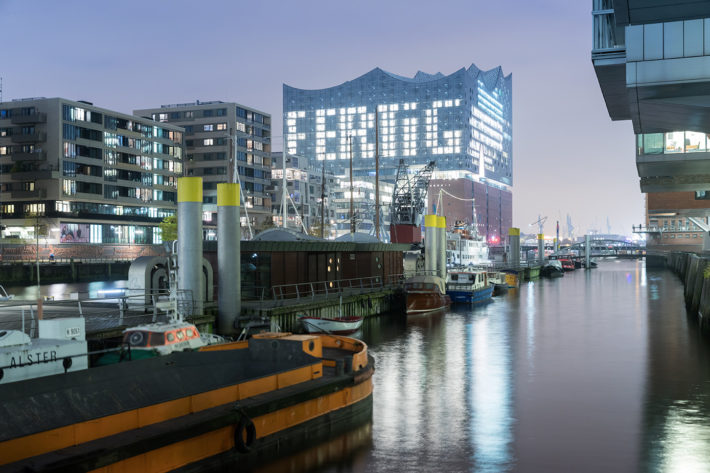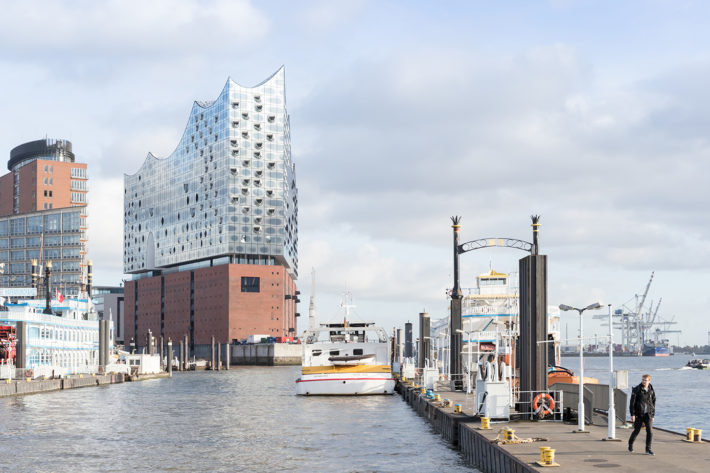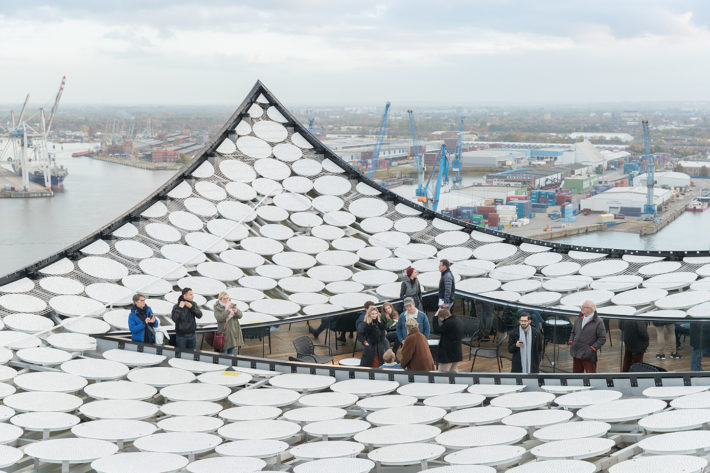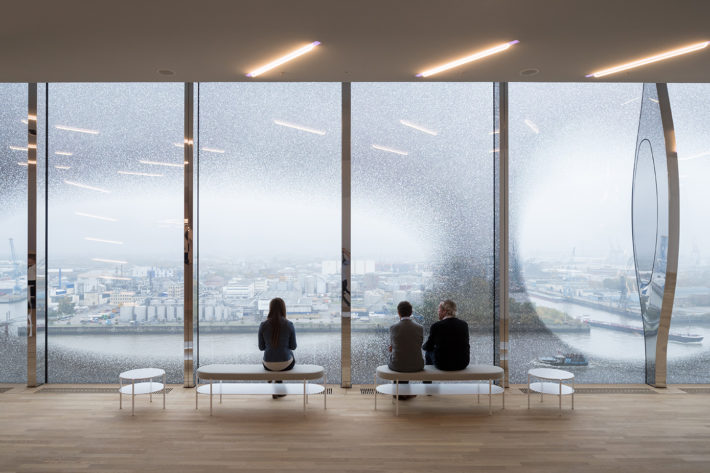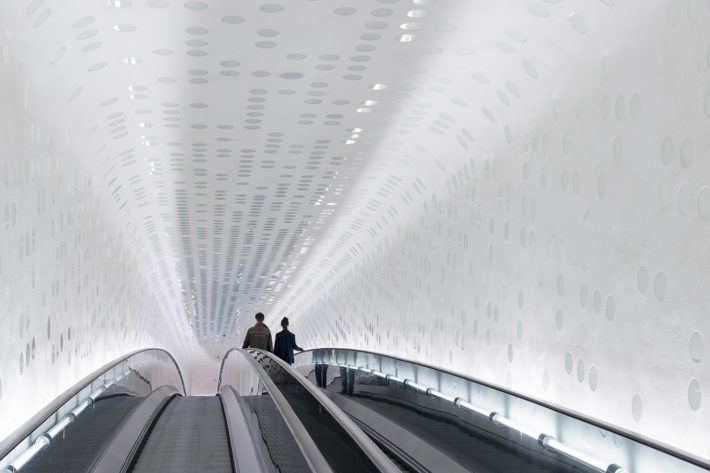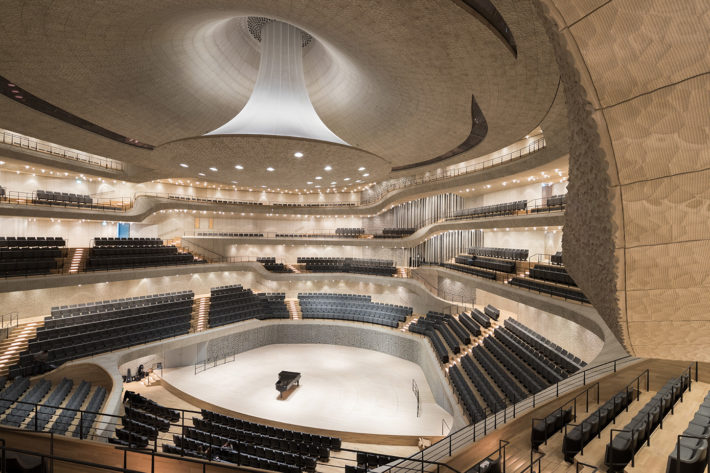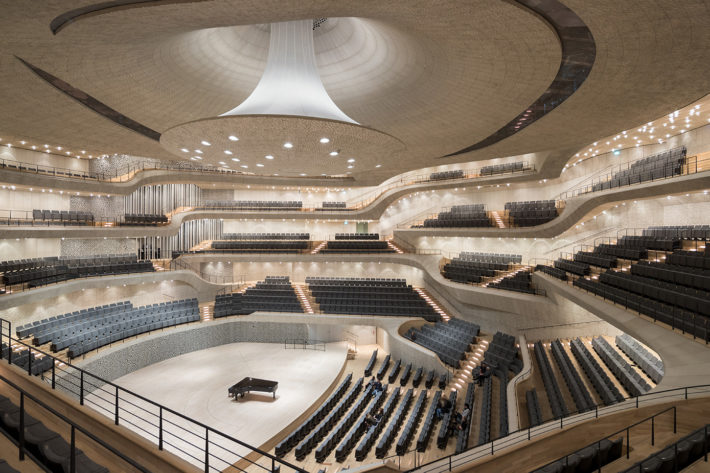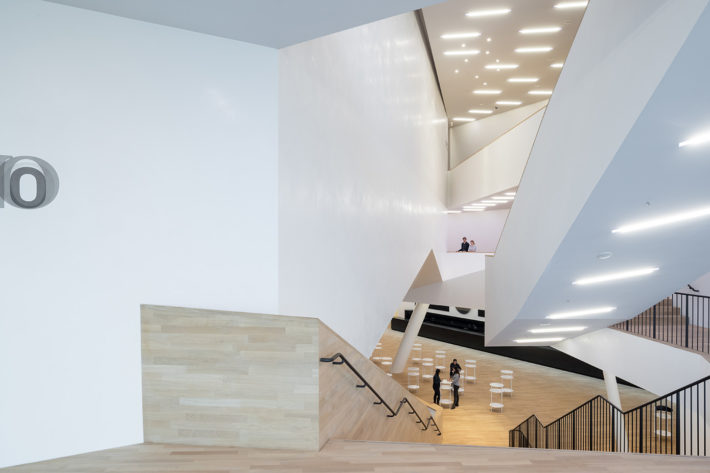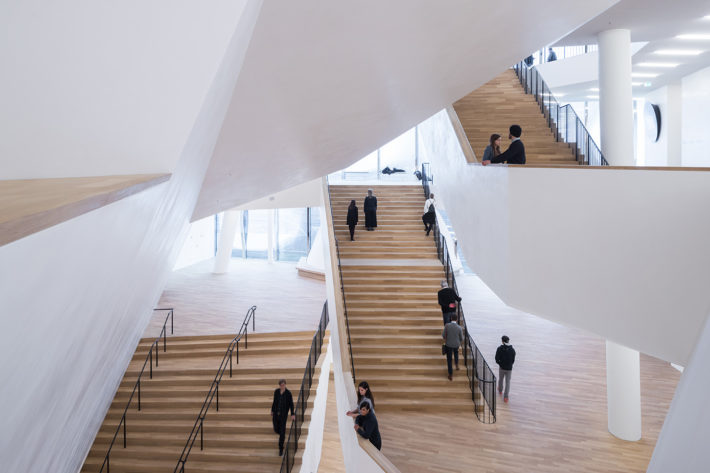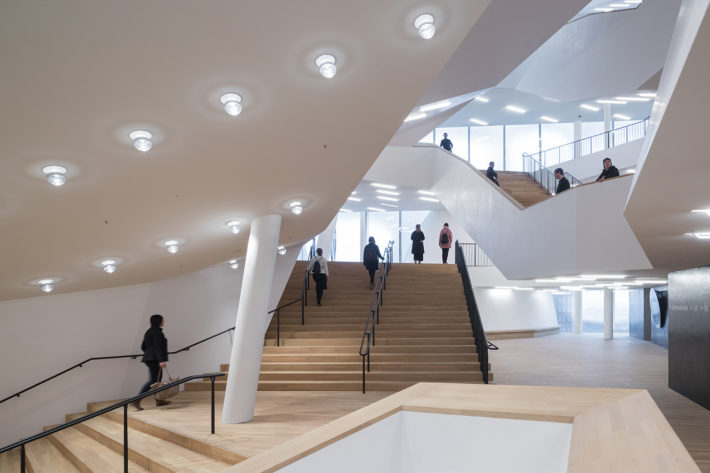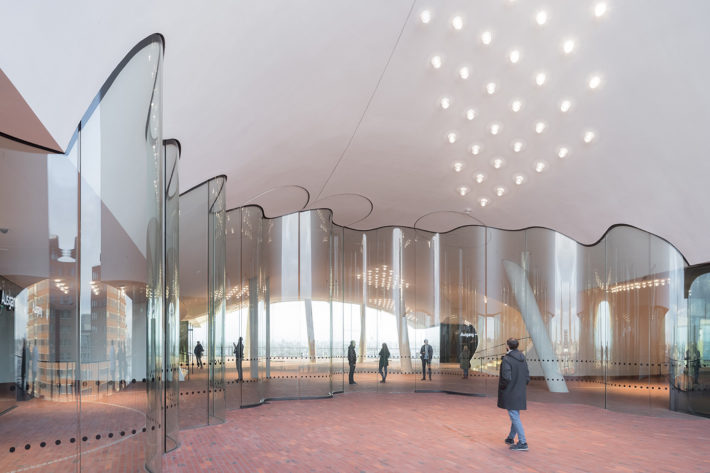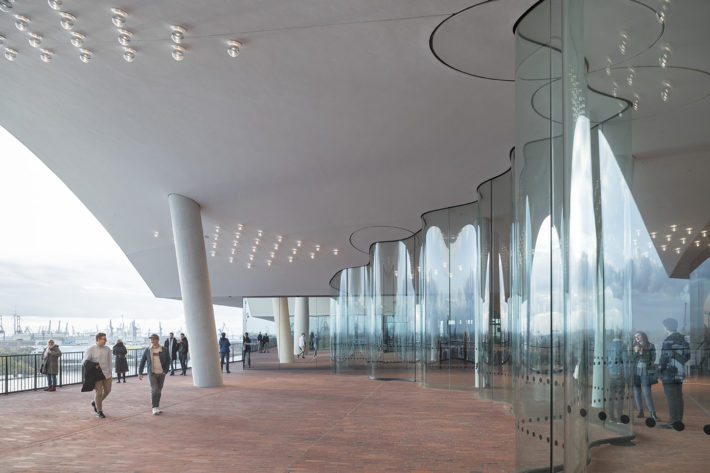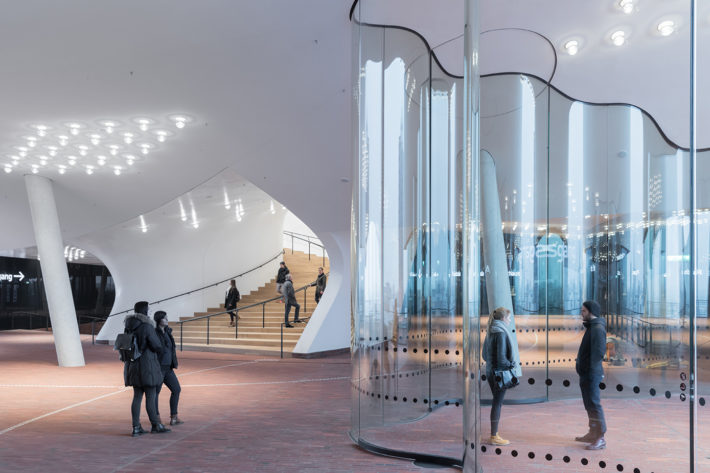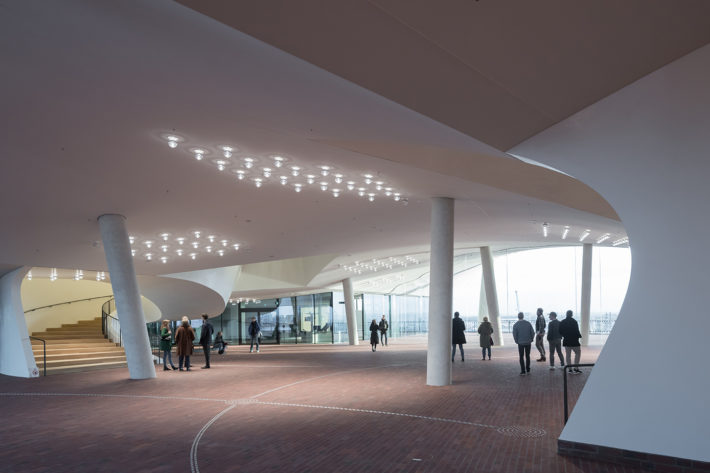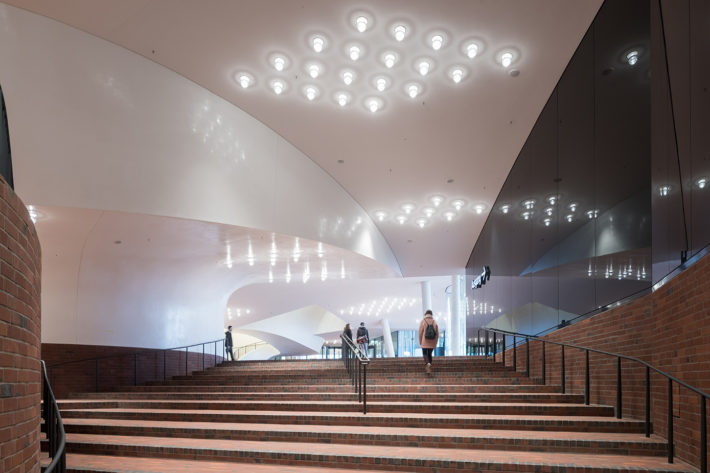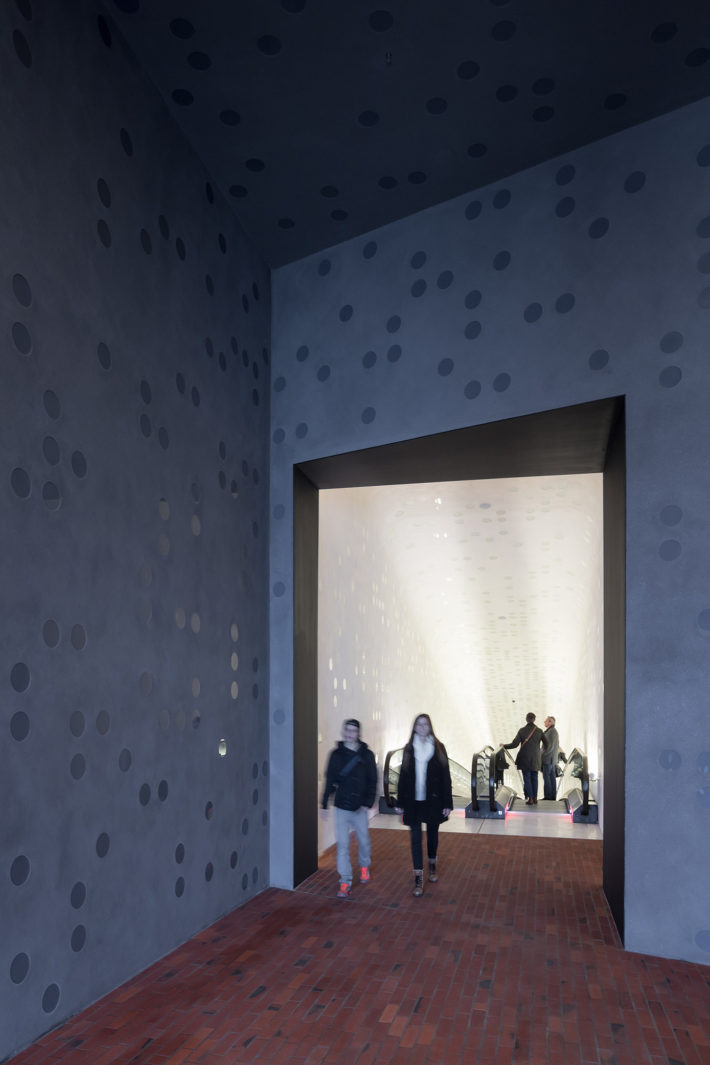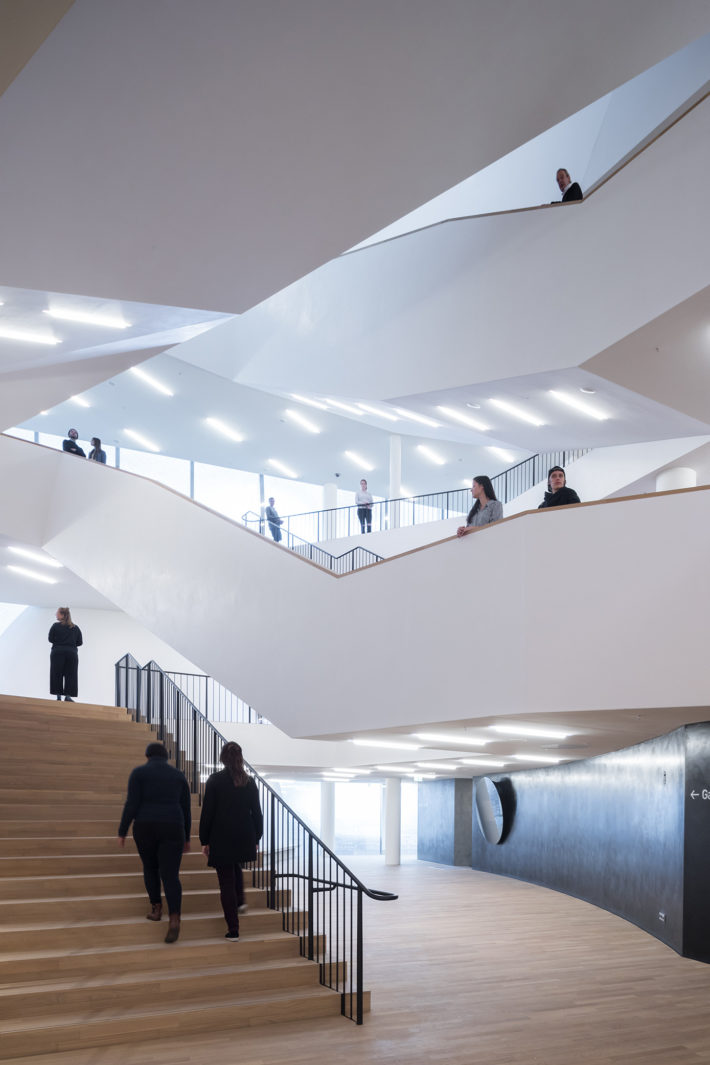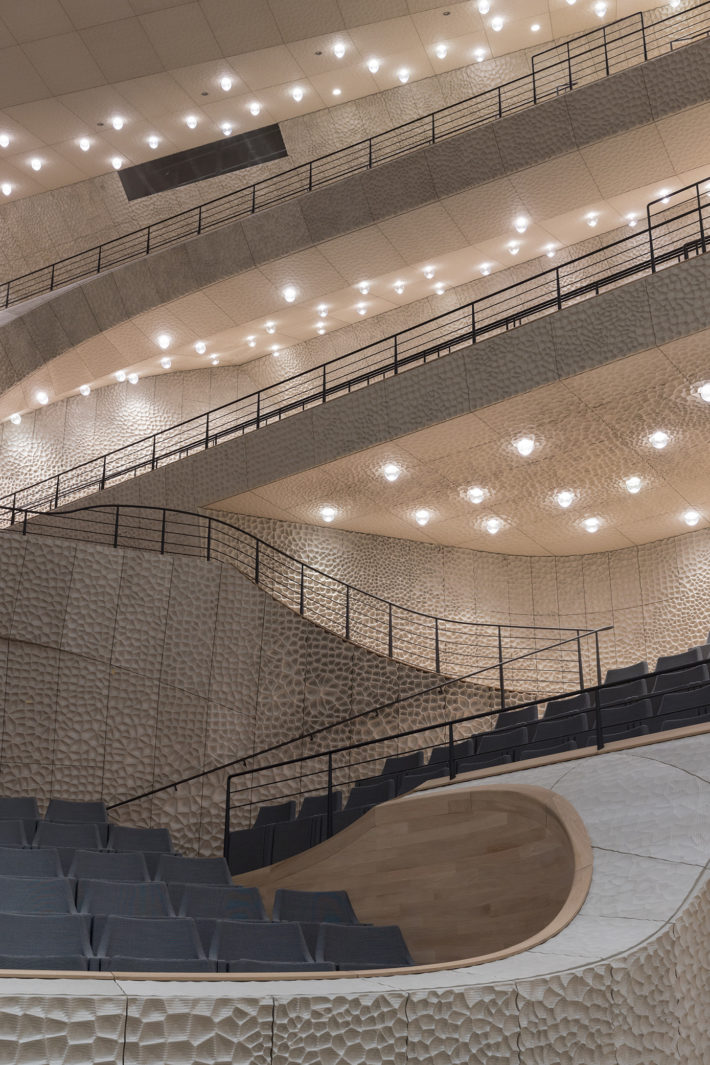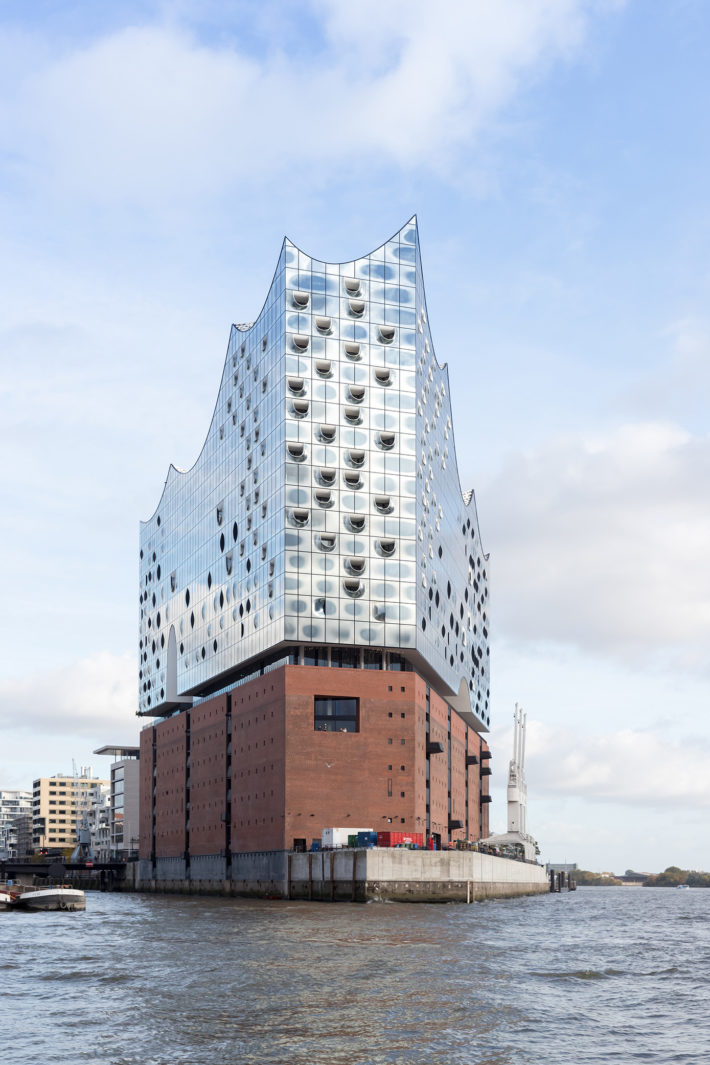21 September 2017
Since January of this year one of the largest and most acoustically advanced concert halls in the world has faced onto the Elba like a ship about to set sail: the Elbphilharmonie, designed by Herzog & de Meuron. Opened after a great deal of controversy over the time it took to build (10 years instead of 4) and its cost (more than ten times the original estimate of 77 million euros), the structure has had more of a political mission than a cultural one since the outset: ensuring Hamburg a prominent role in the Europe of the future. It was supposed to be at the cutting edge of HafenCity, a scheme of regeneration intended to connect the city center and port area. The Swiss practice has created a sort of multifunctional citadel, located next to the historic warehouse district of the Speicherstadt, a UNESCO World Heritage Site since 2015. As well as the concert hall and a recital hall for chamber music, with a capacity of 2100 and 550 respectively, the complex houses restaurants, luxury apartments, a hotel, parking facilities and a public plaza. The architectural language has been chosen with the aim of creating a symbiosis between the historic spirit of the Hanseatic city—with its redbrick façades and gables decorated in the style of the Gothic Revival—and its desire for renewal. The building is set on top of Kaispeicher A, a warehouse designed by Werner Kallmorgen in the 1960s for the storage of cocoa, adopting its pentagonal plan and presenting the appearance of a gigantic iridescent crystal. The profile of the façade, which recalls the shapes of waves and sails, has a precise reference: the Berlin Philharmonie, designed by Hans Scharoun in 1963, a master pattern for the fundamental idea of the hall as well, in which the conductor and his orchestra are located at the center, with the tiers of seating all around them. The high quality of the acoustics is guaranteed by 10,000 fiberglass and plaster panels, designed by Yasuhisa Toyota, which give the space the look of a high-tech cavern. It is a new and indispensable attraction for music lovers from all over the world, and not for them alone: if you are visiting Hamburg, you can come to the Kaispeicher A and from there ascend an extremely long and undulating escalator that will take you to the public plaza, from where you will be able to enjoy a splendid view of the port and the city.
